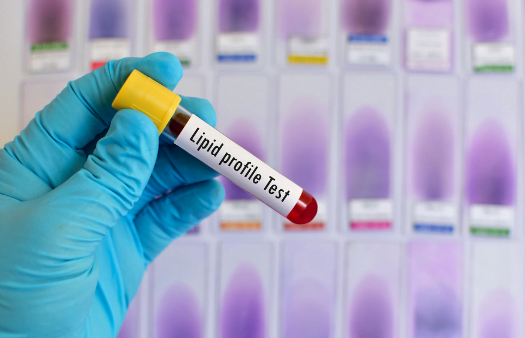Lipid Biomarker Testing in Environmental Wildlife Studies
In the realm of environmental wildlife studies, lipid biomarkers play a crucial role in understanding the health and well-being of various species. These biomarkers serve as indicators of physiological stress, nutritional status, and overall fitness within an ecosystem. This service focuses on the comprehensive analysis of lipid biomarkers for assessing the health conditions and environmental adaptation strategies of wildlife populations.
Lipid biomarker testing is essential in identifying potential threats to wildlife from environmental pollutants or changes in habitat. By analyzing these biomarkers, researchers can evaluate the impact of contaminants such as heavy metals, persistent organic pollutants (POPs), and other toxic substances on wild animals. The ability to detect subtle changes in lipid profiles provides a sensitive early warning system for conservation efforts.
The process involves collecting blood or tissue samples from wildlife specimens under strict ethical guidelines and proper field protocols. Specimen preparation typically includes freezing the samples at -80°C to preserve integrity until analysis can be conducted. Advanced analytical techniques such as mass spectrometry are employed to quantify lipid classes including phospholipids, glycolipids, sphingolipids, and sterols.
Our laboratory adheres strictly to international standards like ISO 17025 for proficiency in performing these tests accurately and reliably. The use of state-of-the-art instrumentation ensures precise measurement and detection limits that are critical for interpreting results correctly.
The significance of this testing extends beyond just academic research; it also has practical applications in conservation biology, helping to inform management decisions aimed at protecting endangered species from anthropogenic stressors. Understanding lipid biomarkers allows us not only to monitor current health statuses but also predict future risks, thereby enabling proactive conservation strategies.
For instance, studies have shown that certain lipids may serve as indicators of reproductive success or immune function in different species. By tracking these markers over time, researchers can better comprehend how environmental factors influence survival rates and genetic diversity among populations.
In conclusion, lipid biomarker testing offers valuable insights into the health dynamics of wildlife under various environmental pressures. This service provides robust data supporting informed conservation practices that are vital for preserving biodiversity worldwide.
Applied Standards
- ISO 17025: General requirements for the competence of testing and calibration laboratories
- ASTM E1468: Standard test method for measuring lipid classes in biological fluids using gas chromatography-mass spectrometry (GC-MS)
- EN ISO 13669: Quality management systems - Requirements for bodies providing audit, verification, and certification of conformity
The laboratory strictly complies with these international standards ensuring reliable and accurate results.
Industry Applications
| Lipid Biomarker Testing in Environmental Wildlife Studies |
|---|
| Detecting environmental pollutants impact on wildlife health |
| Evaluating nutritional status and stress responses of species |
| Monitoring reproductive success and immune function indicators |
| Supporting conservation efforts through data-driven decision making |
The findings from lipid biomarker testing can be used to guide targeted interventions aimed at mitigating harmful effects on wildlife populations.
Quality and Reliability Assurance
- Regular calibration of instruments using certified reference materials
- Detailed validation studies performed internally before adopting new methods
- Participation in inter-laboratory comparisons to ensure consistent results across facilities
- Continuous training for staff on the latest methodologies and best practices
We maintain high standards of quality assurance throughout our testing processes ensuring accuracy and reliability.





